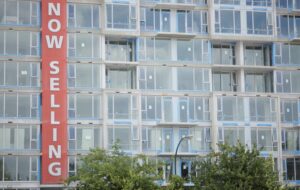Where an individual, either alone or in a partnership, carries on a business activity, the non-commercial loss rules generally apply to prevent losses from non-commercial activities (ie where the outgoings or deductions exceeds the income) from being offset against income from other sources (ie salary and wages of the individual or other income). This is unless the activity satisfies one of the four commerciality tests, or the Commissioner of Taxation exercises discretion not to apply the rules.
The four commerciality tests are:
- assessable income test – assessable income (ordinary and statutory income) from the business activity for the income year is at least $20,000, or would be reasonably estimated to be at least $20,000 if the activity were carried on for the whole year;
- profits test – activity has made a profit for tax purposes in at least 3 of the past 5 income years, including the current year;
- real property test – total value of real property, or interests in real property, used on a continuing basis in carrying on the activity is at least $500,000; and
- other assets test – the total value of other assets used on a continuing basis in carrying on the activity is at least $100,000.
If the activity is deemed to be a non-commercial business activity by virtue of not satisfying any of the commerciality tests, or the Commissioner declines to exercise their discretion, the losses from the activity are quarantined within the business and carried forward to be offset against assessable income of the business activity in future years or until such time the activity passes one of the commerciality tests.
It should be noted that the non-commercial loss rules specifically prevent any taxpayers with an adjusted taxable income of $250,000 or more from offsetting excess deductions from non-commercial businesses against salary and wages. It does not matter that the business activity itself could satisfy one of the commerciality tests, if a taxpayer’s income is above the threshold, they must defer the loss unless the Commissioner exercises his/her discretion.
The adjusted taxable income is not simply taxable income, it is the sum of the taxpayer’s taxable income, reportable fringe benefits total, reportable superannuation contributions and net investment losses for the income year.
In recognition of businesses doing it tough the last few years due to COVID-19 restrictions (ie lockdowns, restricted operating, etc), and natural disasters such as floods and bushfires, the ATO is proposing a safe habour for qualifying individuals who made non-commercial business losses in 2019-20, 2020-21, or 2021-22. This will allow those businesses to manage their tax affairs as if the Commissioner had exercised his/her discretion, and there will be no need to specifically apply for the exercise of discretion.
In order to qualify for the safe habour, the business activity must have made a tax profit in the immediately preceding income year, and:
- satisfy the income requirement (ie the individual seeking to deduct the loss from the activity must have an adjusted taxable income below $250,000);
- a loss was made by the business activity;
- the activity was affected by flood, bushfire, and/or a government imposed lockdown, closure or restriction due to COVID-19;
- the event meant that the business activity was unable to be carried on to the same scale as usual or some or all of customers were not able to access the business activity or access it in the same way as usual; and
- no private ruling has been requested that the Commissioner exercise his discretion.
It should be noted that this proposed safe habour does not prevent business operators from applying for an exercise of the Commissioner’s discretion in the usual way if they do not fall within the above terms. In addition, business activities that seek to apply the safe habour must have evidence to support that application.



